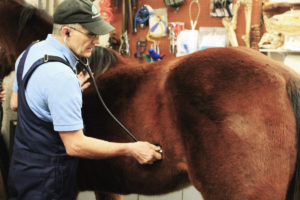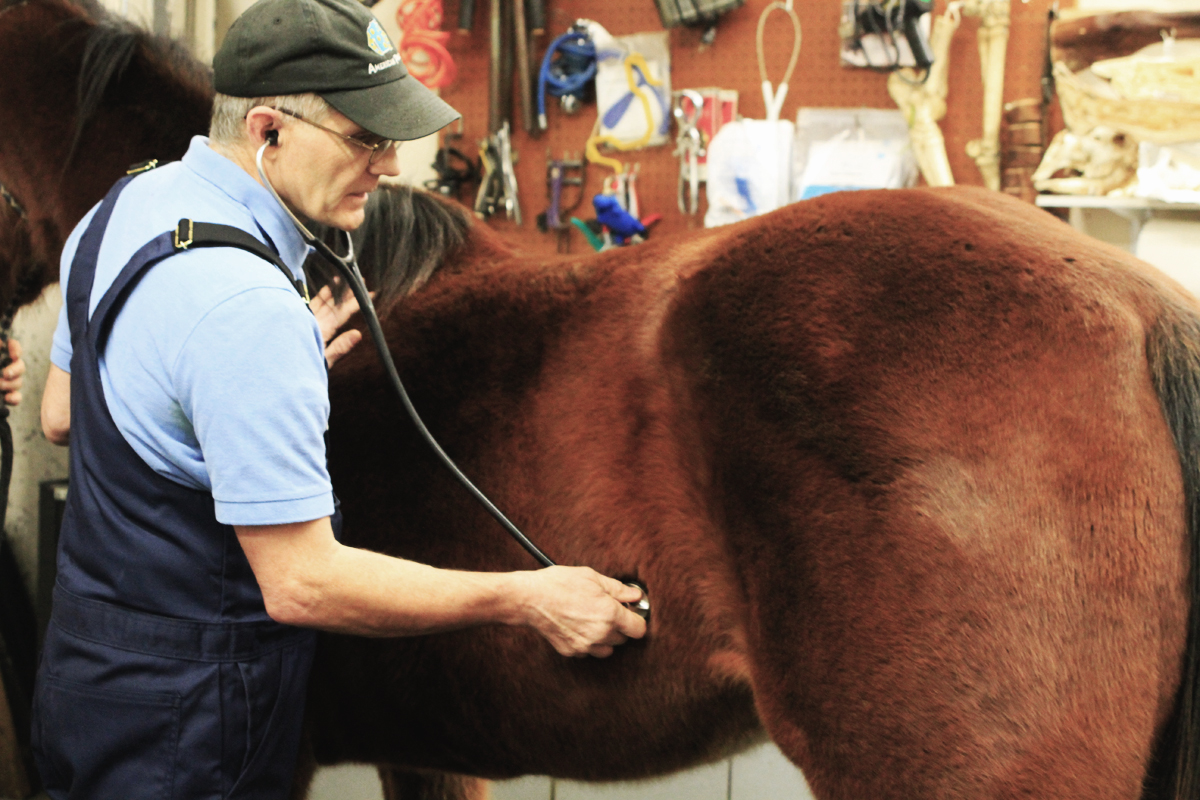A Vet Talks About the Equine Outbreak
By Dave Sauter, DVM
This year, Equine Herpes Virus (EHV) became one of the most infamous infections in horses, both inside and outside the horse owning population. The outbreak that began with horses that attended the National Cutting Horse Association show between April 30th and May 8th created a whirlwind story that swept through the region, significantly fueled by the internet. As I write this article, the story is still unfolding while the virus continues to spread. It is uncertain how far it will reach and how many horses will be affected before it, hopefully, finally burns out.
 As of today, there are over 75 confirmed cases of EHV-1 or EHM in nine states (CA, CO, ID, NM, NV, OR, TX, UT, WA). Of these at least 28 have the life threatening neurological form of the disease; at least 11 have died or been euthanized. As of today, there are seven confirmed cases in Washington, three confirmed cases in Alberta, and at least three suspect cases in British Columbia. The focus is shifting away from the primary group of exposed horses and towards horses secondarily exposed to horses that were at the show. There are at least hundreds of these horses and so far just a few have gotten the disease.
As of today, there are over 75 confirmed cases of EHV-1 or EHM in nine states (CA, CO, ID, NM, NV, OR, TX, UT, WA). Of these at least 28 have the life threatening neurological form of the disease; at least 11 have died or been euthanized. As of today, there are seven confirmed cases in Washington, three confirmed cases in Alberta, and at least three suspect cases in British Columbia. The focus is shifting away from the primary group of exposed horses and towards horses secondarily exposed to horses that were at the show. There are at least hundreds of these horses and so far just a few have gotten the disease.
Herpes virus in horses is not new. The Gluck center at the University of Kentucky has been studying the virus for at least 40 years. We have known for years that EHV type 1 can cause respiratory disease, abortions, and neurological disease. What does seem new is that there is an increasing prevalence of the variant of EHV-1 that causes neurological disease. This variant form is more virulent, more pathogenic with higher mortality rates and has been recognized emerging more often from equine events where horses from different areas congregate.
The internet and social networking outlets such as Facebook have certainly played, in my opinion, a very big role in the spread of the ongoing story and the response of the general public. The quick spread of information had several effects. Official agencies, especially state branches of the USDA but also American Association of Equine Practitioners and the United States Animal Health Association, rapidly informed veterinary practitioners within their state of developments and provided us with useful resources to deal with the onslaught of widespread public concern. Accurate information was updated almost daily. Numerous private websites such as the TheHorse.com and the Equine Chronicle Online provided the public with updates and links to learn more about the disease, the symptoms, biosecurity measures, show cancellations, etc. Rumors quickly generated, but were just as quickly dispelled because accurate information was also readily available through reliable sources. Although some will say the public overreacted, it was their reaction that fueled this process along. Thank you to the public for using technology wisely.
In response to the EHV-1 outbreak, the American Horse Council and the American Association of Equine Practitioners contacted the USDA and requested federal coordination for data collection, dissemination, and communication efforts among state and federal veterinarians.
Signs of an EHV-1 infection.
After a incubation period of between 1 to 2 and up to 10 days, the first sign is a fever. There may be mild respiratory signs but with the neurological form, depression, weakness, stumbling, lack of coordination especially in the hind limbs, loss of tail tone and urine dribbling. If the neurological signs intensify, it can lead to an inability to stand.
Here are a few of the websites that have been particularly useful:
www.aphis.usda.gov/vs/nahss/equine
Published July 2011 Issue

Dave Sauter is a Minnesota native and graduated from the University of Minnesota in 1987. Following graduation he interned at Rood and Riddle Equine Hospital in Lexington, Kentucky. After this internship, he continued to work exclusively with horses for another five years in Kentucky before moving out West and joining Kulshan Veterinary Hospital in Lynden, WA. He is a member of the AAEP, AVMA and the WSVMA. For more information about Kulshan Veterinary Hospital call 360-354-5095 or email drkulshan@msn.com. www.KulshanVet.com






